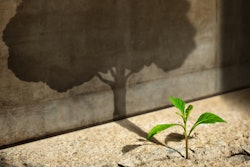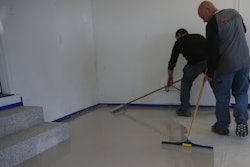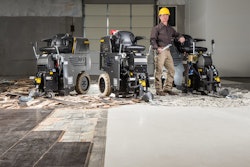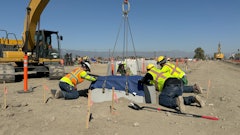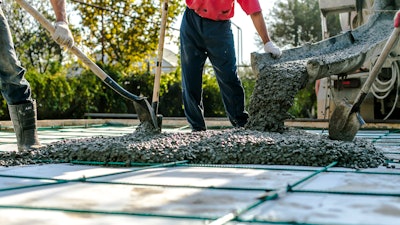
According to the United Nations Environment Programme, the buildings and construction sector accounted for 37% of global energy and process related CO2 emissions in 2021. As a result, the UN called for the built environment to halve emissions by 2030 and reach net-zero by 2050. Decarbonizing the industry is important, but contractors must find a way to balance improving sustainability with other industry priorities, such as delivering durable, profitable, and timely projects.
The Problem With Concrete
Concrete is one of the most commonly used building materials because of its durability, affordability, and versatility. However, it is also known for being a carbon intensive material. Eight percent of the emissions generated by human activity comes from manufacturing cement, the core component of concrete, because of the high energy requirements of the process. Currently, concrete also feels like an abundant resource because it contains raw materials such as aggregate from sand and gravel, as well as water. While these are renewable resources, overusing them could still negatively impact the environment.
The cement manufacturing industry is already exploring how to reduce emissions, but in the meantime we have a lot of concrete in existing infrastructure that we must consider how best to use. Most existing building foundations are made of concrete because of its affordability, durability, and insulation properties, and it is clear that the industry will keep using this material to build foundations because of its superior performance. 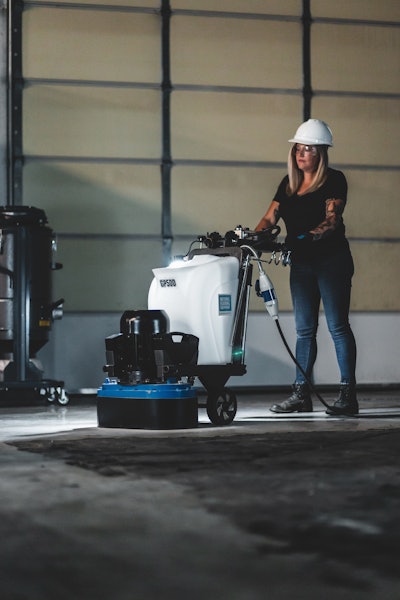 Concrete is a popular material choice in flooring because the strength of the floor is an important part of the building’s overall structural integrity.National Flooring Equipment
Concrete is a popular material choice in flooring because the strength of the floor is an important part of the building’s overall structural integrity.National Flooring Equipment
Celebrating Concrete
Concrete is a popular material choice in flooring because the strength of the floor is an important part of the building’s overall structural integrity. Most subfloors — the surface on which floor coverings are applied — are therefore made from concrete. While it’s not the most sustainable material to manufacture, when you look at its entire lifecycle, concrete flooring can help contractors deliver cost-effective and sustainable infrastructure. This is because concrete has a long lifespan, requires minimal maintenance, and has reflective and thermal insulating properties that can improve energy efficiency.
A Sustainable Finish
Specialists in sustainable flooring materials have suggested that the built environment replaces some of its core floor covering materials for more environmentally friendly ones, moving from epoxy and vinyl to natural materials, for example. While these natural coverings, such as bamboo, cork, or hemp brick, could drastically reduce carbon emissions and be more circular, they are often costly, and in some instances, impractical. For example, engineers in industrial spaces may struggle to maneuver equipment on a cork floor and could even break it. A sustainable material can only be specified if it is durable enough for the application, otherwise it will need replacing, resulting in material waste.
The most sustainable option is to make use of what’s already on the floor. Conveniently, polished concrete is already a popular flooring choice, particularly in large open spaces where the reflective surface can reduce energy usage. However, in most existing buildings, contractors laid the original subfloor with the intention of covering it with a material such as epoxy, hardwood, or other coverings. Therefore, when polishing the floor, it might not look as aesthetically pleasing as desired. It may be that the aggregate is unevenly spread or the space required multiple batches of concrete that differ in color, aggregate size, and consistent appearance.
To determine whether contractors can polish an existing substrate and it be visible in the final floor, they must review the condition of the concrete, looking for any signs of cracks, contaminants or uneven sections to address. If there are any issues the contractor must discuss them with the client. Hand grinding a small sample of floor to reveal the aggregate can give a good indication of the possible finished result before continuing to grind and polish the entire floor.
Fit for the Future
As the industry builds new infrastructure, contractors can look at how to lay concrete foundations with the polished finish in mind. By pouring the concrete so that there is a fine layer of even aggregate near the surface and grinding and polishing the floor after it has cured but before other structures are built, contractors can achieve the best surface profile across the entire space. When grinding and polishing the concrete, contractors should start with tools that have a lower grit, gradually increasing the grit size which reduces the size of the scratches until they achieve the expected polished finish. Concrete acts like a sponge and when left untreated, can stain easily. Contractors should densify around the 200-grit step which will make the finished concrete less porous and harder for the final polished step to improve its durability.
A polished, grey concrete floor won’t suit every space, so some contractors are exploring different methods to offer more options. Staining or painting concrete during preparation can achieve a finish like marble or ceramic tile. Alternatively, some companies use stamps, scoring, and staining that make concrete look like wood flooring.
While it may not seem like the most sustainable material when compared with natural materials, concrete’s durability and strength means that the construction industry will continue to use it to build safe and long-lasting structures. However, if we stop looking at concrete as something to cover, and start celebrating its existing beauty, concrete could be the most sustainable flooring option of all.




